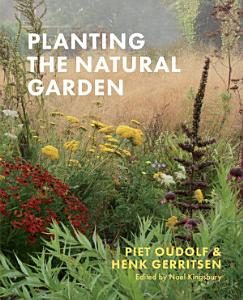I know Thanksgiving is approaching and time will be short but I want to continue with my suggestions for holiday gift giving and reading. The authors of the book below are concerned with the environment but believe that gardeners can and should take advantage of “exotic” plants as well as natives.
 Planting the Natural Garden by Piet Oudolf and Henk Gerritsen
Planting the Natural Garden by Piet Oudolf and Henk Gerritsen
Two early advocates of the naturalistic garden, Piet Oudolf and Hank Gerritsen, are well-known to those of us in the perennial world. This book was originally printed in 1990 but has now been updated and revised according to the experience gained since then. Both men are garden designers who believe that careful selection of plants is needed in order to create a palette of reliable plants that look wild but require minimal maintenance. They also believe that we should use plants that are ecologically sensitive to the site while enhancing or hiding architectural features and/or creating an emotional atmosphere.
The first half of the book is an encyclopedic list of the perennials and grasses that they believe are most useful in naturalistic gardens. The list has been revised to focus on lower maintenance plants. The second half discusses plants that can be characterized by particular traits and used to achieve specific effects. Each section is followed by a list of perennials and grasses that epitomize these traits and effects. I love the addition of “Scatter Plants” that give a garden a spontaneous appearance, thus helping to give a sense of rhythm.
In all their designs, great emphasis is placed on using the structure of plants, both in and out of flower, as well as contrasting textures with foliage and flower or inflorescence. One of the hallmarks of their design is the use of plants with excellent winter silhouettes as well as structure and seedheads for wildlife.
In addition, they point out that color establishes mood and they give examples to demonstrate that a tranquil scheme does not have to be boring. Masses of perennials frequently have “weight” that can be alleviated and contrasted with the lightness of masses of ornamental grasses.
Many gardeners are enthused in the spring but lose interest by late summer. Oudolf and Gerritsen supply a list of late summer and fall bloomers and encourage planting them among spring bloomers so that the space does double duty. They firmly believe that gardens should not be boring in the fall. Near to my heart is their admonition to avoid the gloom of autumn by eschewing the notion of fall cleanup, i.e. cutting everything down.
At the end of the book, some of Piet’s and Henk’s planting plans are included with plant lists. They are both an insight into their methods of design and demonstrate some of the combinations that they love. The combinations make use of plants that flower at the same time and that have the same ecological requirements.
Throughout the book, all points are beautifully illustrated with excellent photographs. This book, like their others, is quite inspiring and applicable to all of our gardens.


0 Comments